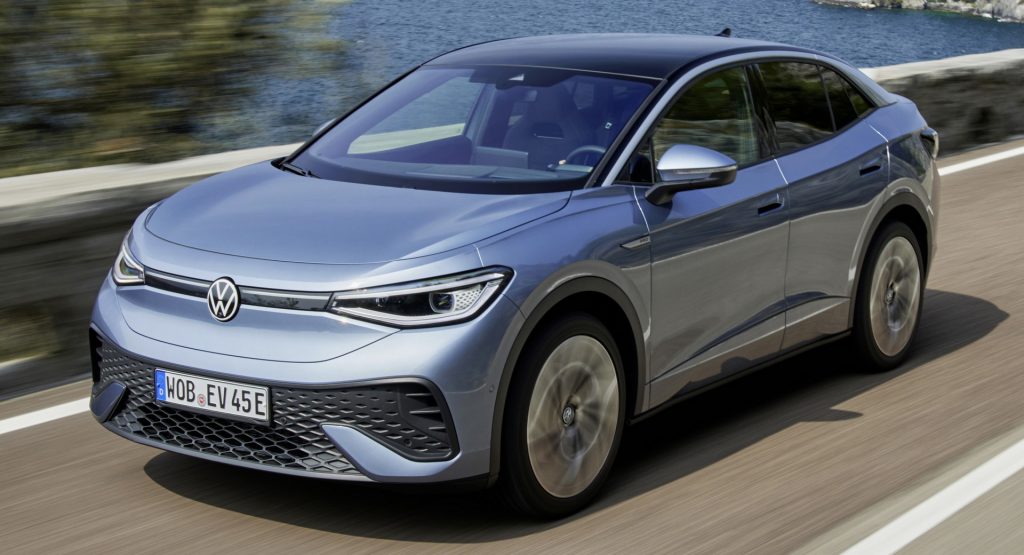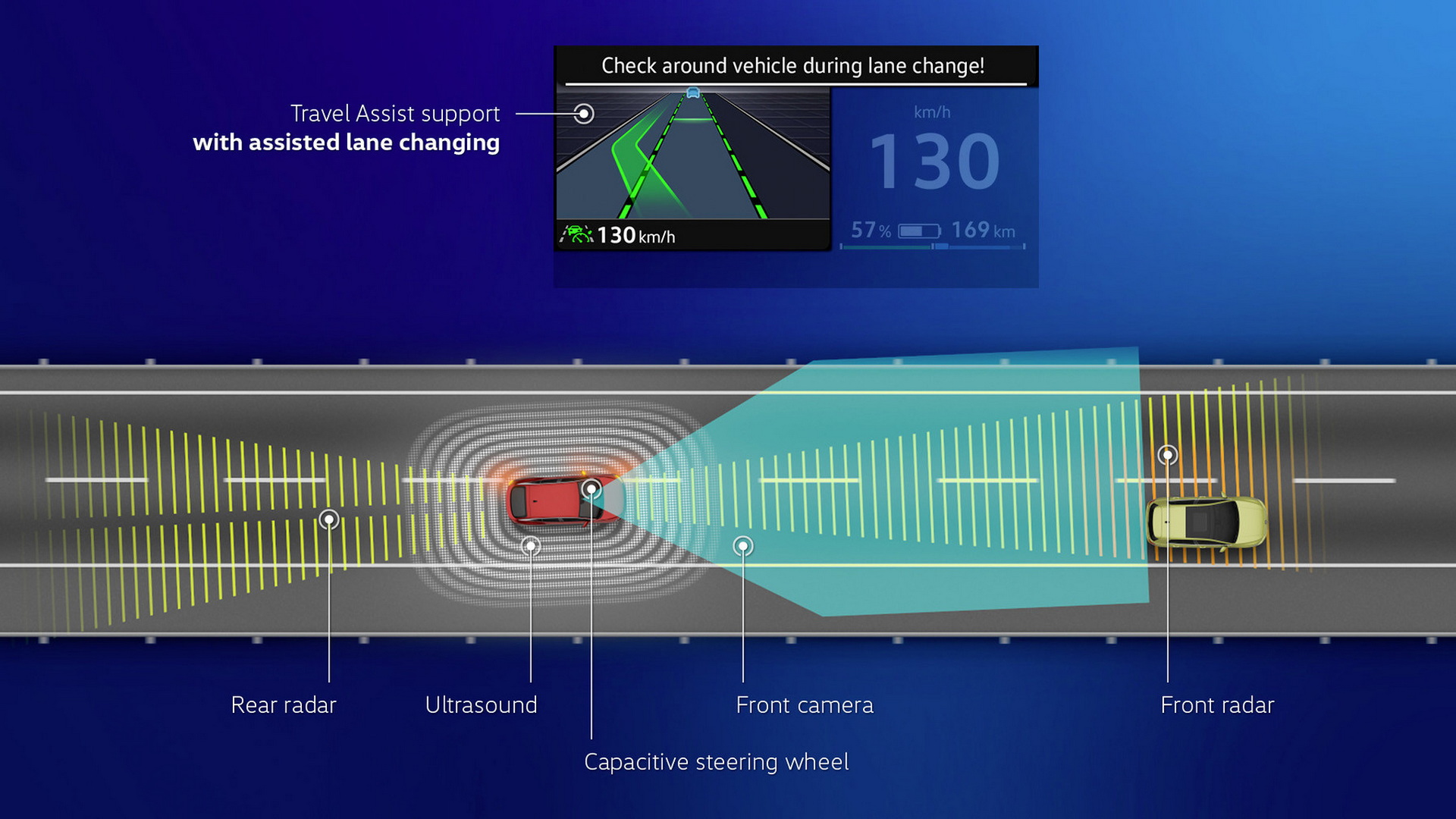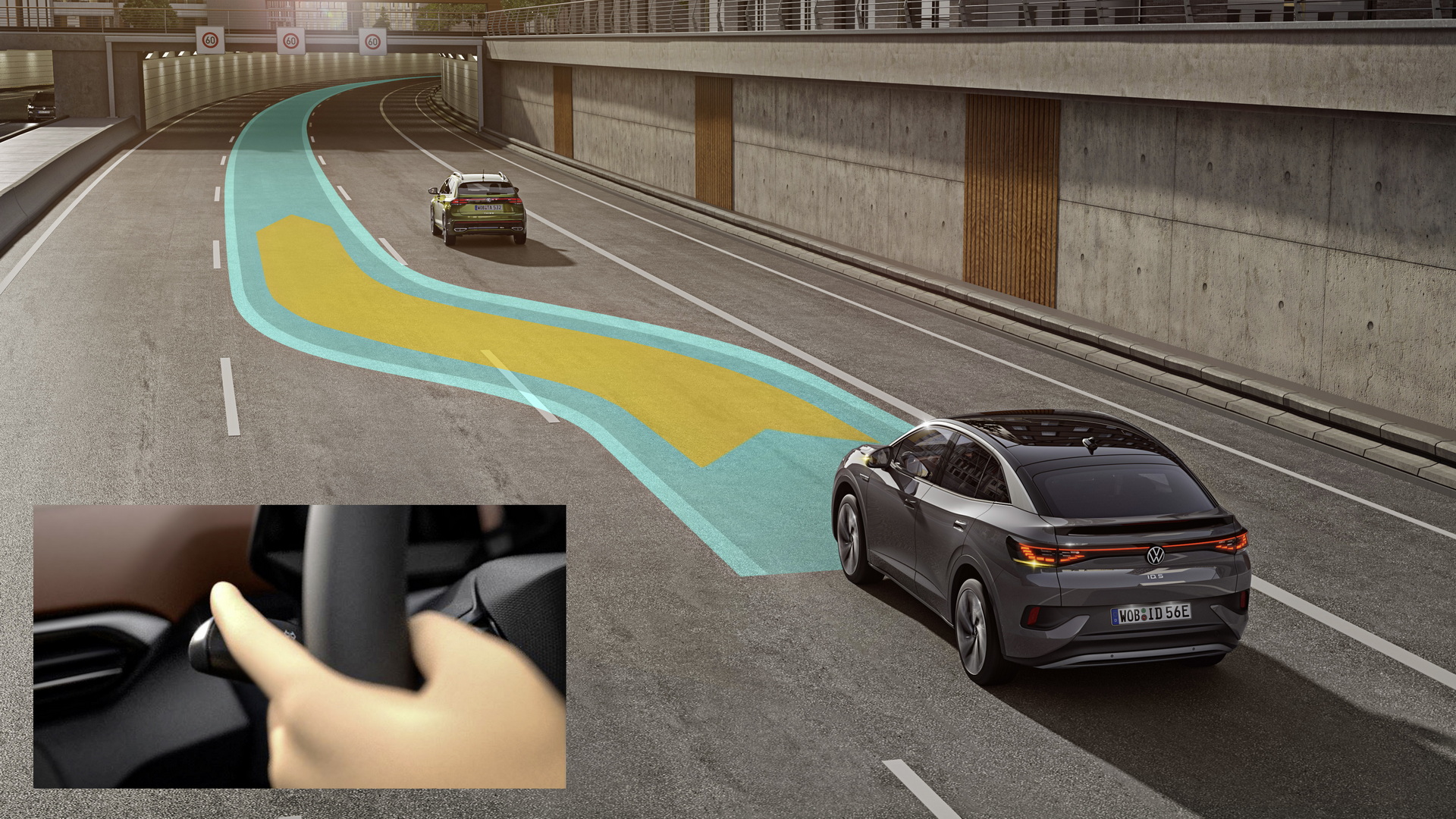Euro NCAP, the continent’s safety regulator, has rated the Volkswagen ID.5’s advanced driver assistance systems as “very good” and given it the highest possible score of four out of four points.
In order to keep up with technology, the organization expanded its testing scheme with the “Driver Assistance Test,” which rates these systems in order to give consumers an insight into the performance of advanced technology in modern vehicles.
The test procedures include critical motorway driving scenarios, including cut-in and cut-out maneuvers and it tests the system’s ability to assist the driver in avoiding accidents. The tests also look at how well the system works with the driver to ensure that they remain alert and engaged, despite the adaptive cruise control or lane-keep assistance technologies that are operating.
Read Also: Honda HR-V And DS 4 Score Four Stars In Euro NCAP, Dacia Jogger Gets Only One
“The VW ID.5 provides very good Vehicle Assistance with a similar level of Driver Engagement,” Euro NCAP wrote. “Combined with excellent safety back-up, the system, overall, offers Very Good highway assistance.”
Volkswagen boasts that this was achieved with the help of new technologies, such as “Travel Assist with swarm data.” That feature can keep a vehicle stay in its lane and maintain its distance to a leading vehicle with the maximum speed set by the driver. It can also keep the ID.5 in the middle of its lane and adapt to the driver’s style by keeping to the left or right of the lane if, say, there is a transport truck or other large vehicle in the next lane. This technology is designed to make vehicle occupants feel more comfortable.
It also allows the vehicle to make lane changes, requiring the driver to simply use the indicator. The vehicle’s sensors then check its surroundings and it performs the maneuver automatically.
This test adds to the Volkswagen ID.5‘s collection of safety accolades. In March, the crossover earned the top possible rating of five out of five stars in the Euro NCAP safety test, which tests the vehicle’s performance during a collision.






